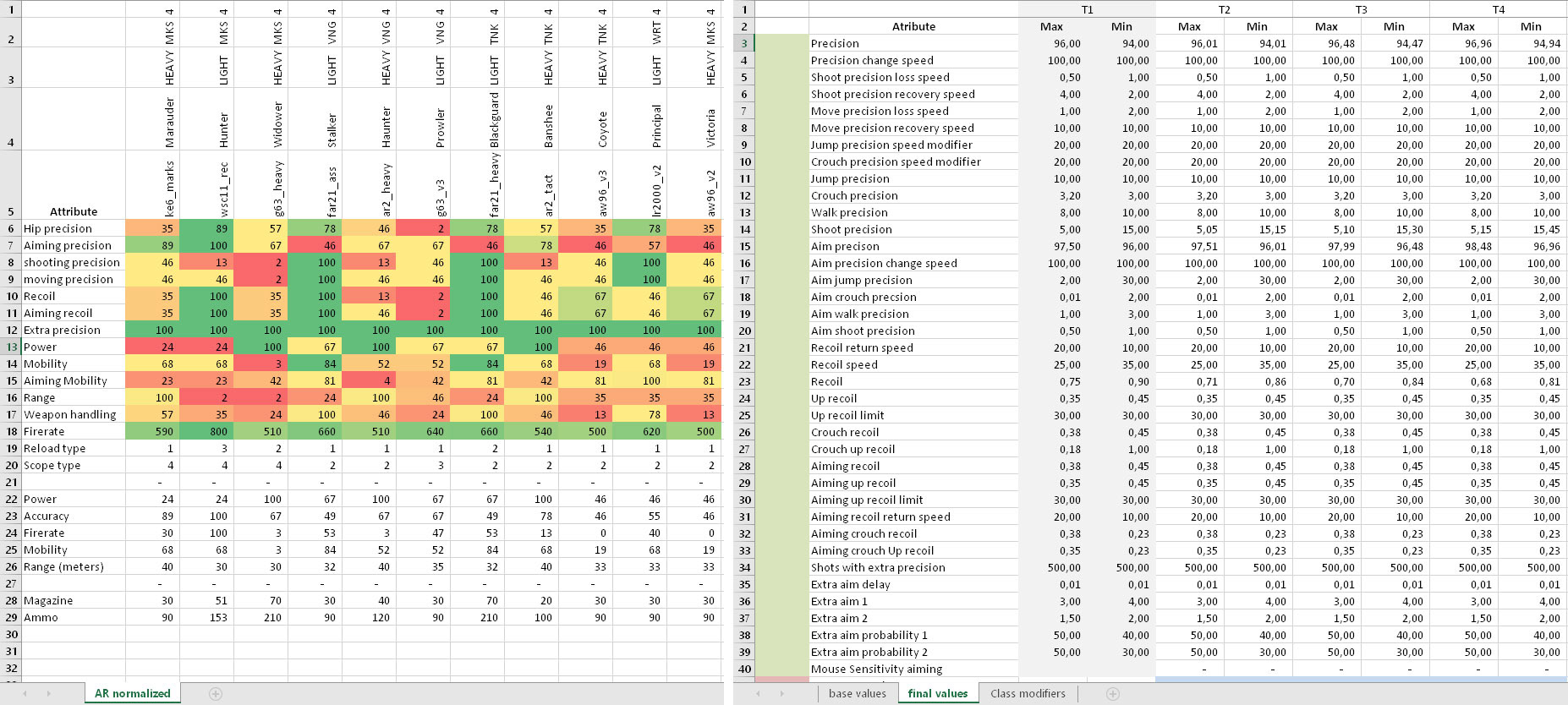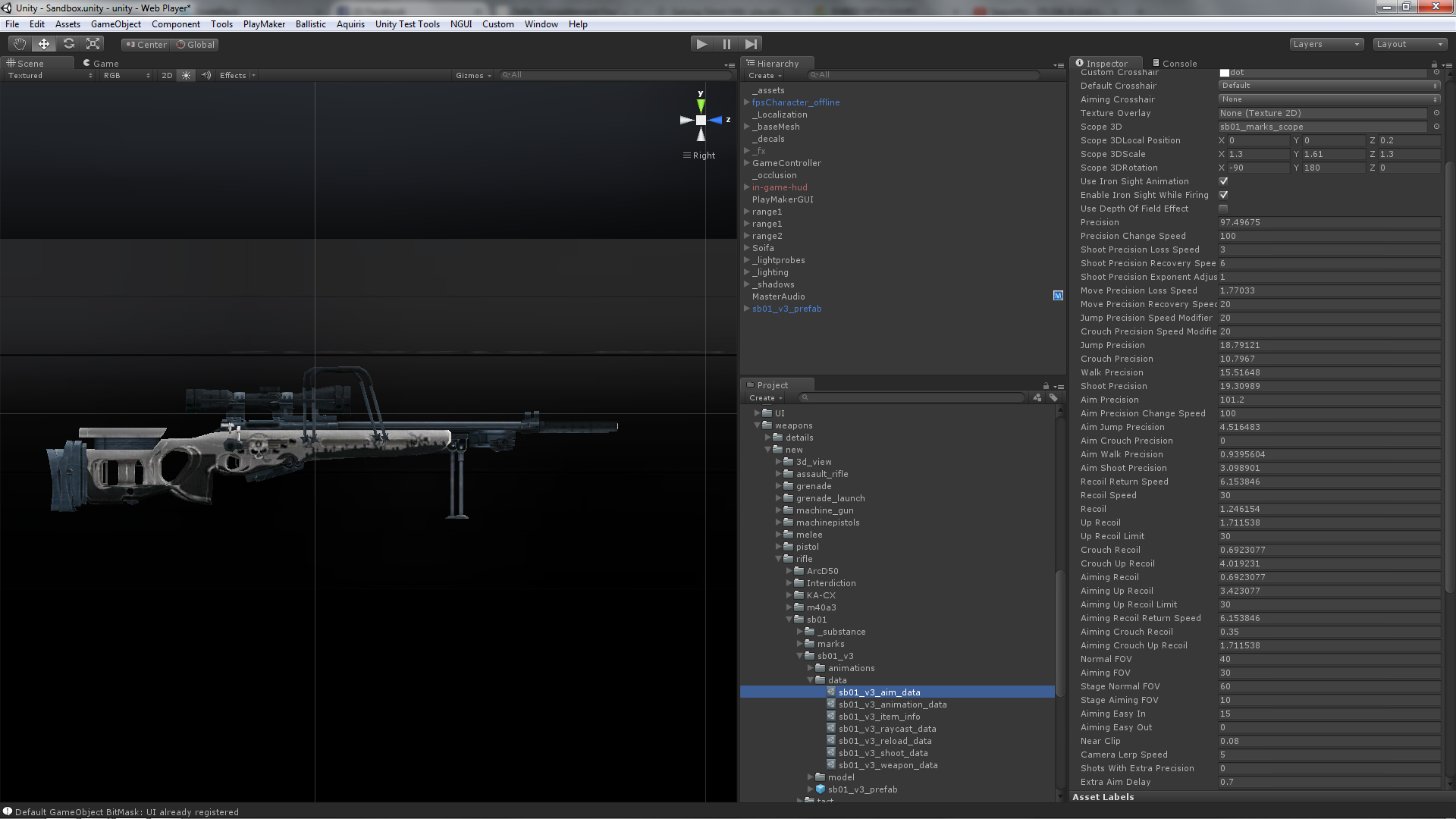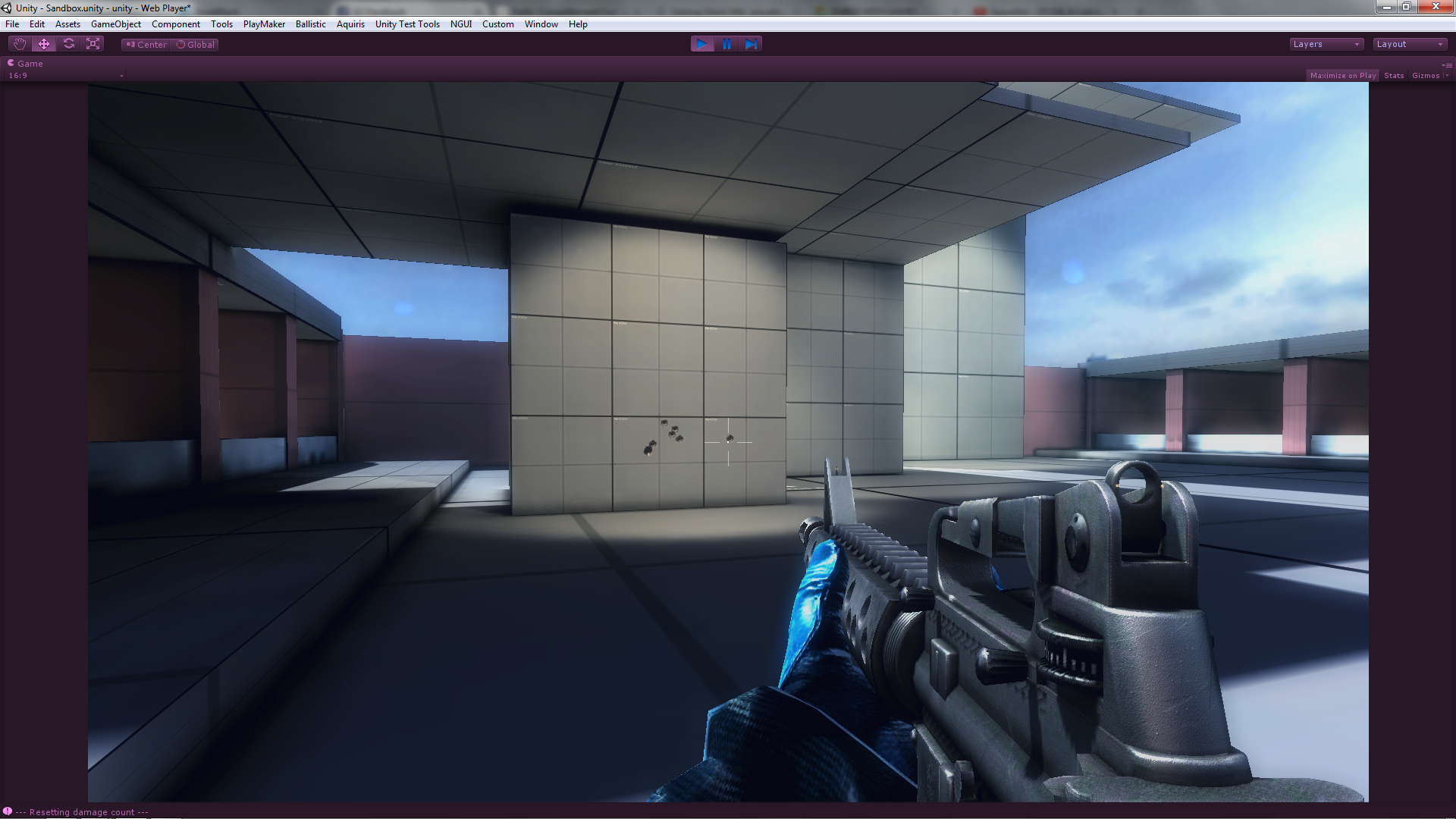Ballistic is a fast paced PvP first person shooter designed for browsers and published by Rumble. The game features several game modes and offers multiple classes with unique skills and arsenals to play.
My responsibilities as game designer were:
- Balancing classes, weapons, skills and economy.
- Polishing game feel.
- Designing and following up implementation of features with engineering and art teams.
- Designing and pitching updates to the publisher.
- Designing classes, each one with a unique skill tree and arsenal.
- Designing new content.
- Redesigning the skill system with the programming team.
- Scripting skills with PlayMaker.
- Redesigning the onboarding for Version 3.0 with the lead designer and UI/UX team.
- Assisting the QA analyst with testing, whether on development or live environments.
- Keeping documentation and changelogs up to date.
- Collecting and filtering feedback from the community.
- Interpreting telemetry data to achieve a finer balance.
- Polishing game feel.
- Designing and following up implementation of features with engineering and art teams.
- Designing and pitching updates to the publisher.
- Designing classes, each one with a unique skill tree and arsenal.
- Designing new content.
- Redesigning the skill system with the programming team.
- Scripting skills with PlayMaker.
- Redesigning the onboarding for Version 3.0 with the lead designer and UI/UX team.
- Assisting the QA analyst with testing, whether on development or live environments.
- Keeping documentation and changelogs up to date.
- Collecting and filtering feedback from the community.
- Interpreting telemetry data to achieve a finer balance.
Developed by: Aquiris Game Studios, 2014
Platform: Browser
Tech Environment: Unity, PlayMaker, Custom tools, SVN, Paper prototyping, Excel, Photoshop
Platform: Browser
Tech Environment: Unity, PlayMaker, Custom tools, SVN, Paper prototyping, Excel, Photoshop
I joined Ballistic team during Version 2.0, which had the game systems structured around a tech tree of weapons and the playstyle was further defined by choosing skills from three archetypes. The gameplay was enticing and rewarding, however, in Version 2.0, a player could acquire all weapons and make skill combinations between the three archetypes. Even though many resources were at hand, the variety of tactics and viable character builds was meager.
Reaching deep nodes of the weapon tree required a lot of time or investment and could render the player with few options to try different strategies. Telemetry data also indicated that few players would acquire more than two loadouts of skills specs and that the respec item was rarely sold. The lack of incentive to explore different approaches also reflected on the game economic performance, since players that reached maximum level had less incentive to keep pursuing new goals.

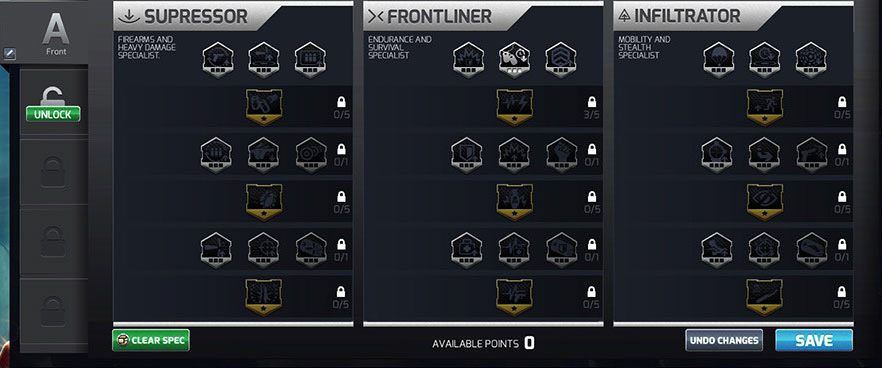
Version 3.0 main goal was to promote diversified gameplay and increase players long-term commitment with a clear incentive to explore game content. To reach the design that was approved for Version 3.0, the lead designer and I had a long process of negotiatiing with the publisher and adapting the design.
The new design introduced the approach of classes to the game, in which seven classes, with different attributes, unique arsenal and skill set, offered players roles to perform in a team and a wider variety of playstyles to explore within those roles. The weapon tech tree was removed and each class had an arsenal of 11 weapons of two categories, divided into 4 tiers that steeply increased their performance. An exception to that rule was the Granadier and Shadow classes, that also featured a grenade launcher and sword, respectively, along the two weapon categories assigned to them.
Along with the arsenal, the distinct skill trees from each class played a major part in defining the role for each class. Each tree first skill was a class-defining ability, while the left branch was related to weapon proficiency and the two others related to core traits of the class. Combining this guided approach with the descriptions of each class, it was easier for players to explore different playstyles. To further promote experimentation, skill spec loadouts were removed and the respec price was dropped, increasing its use and relevance as one of the credits sink.
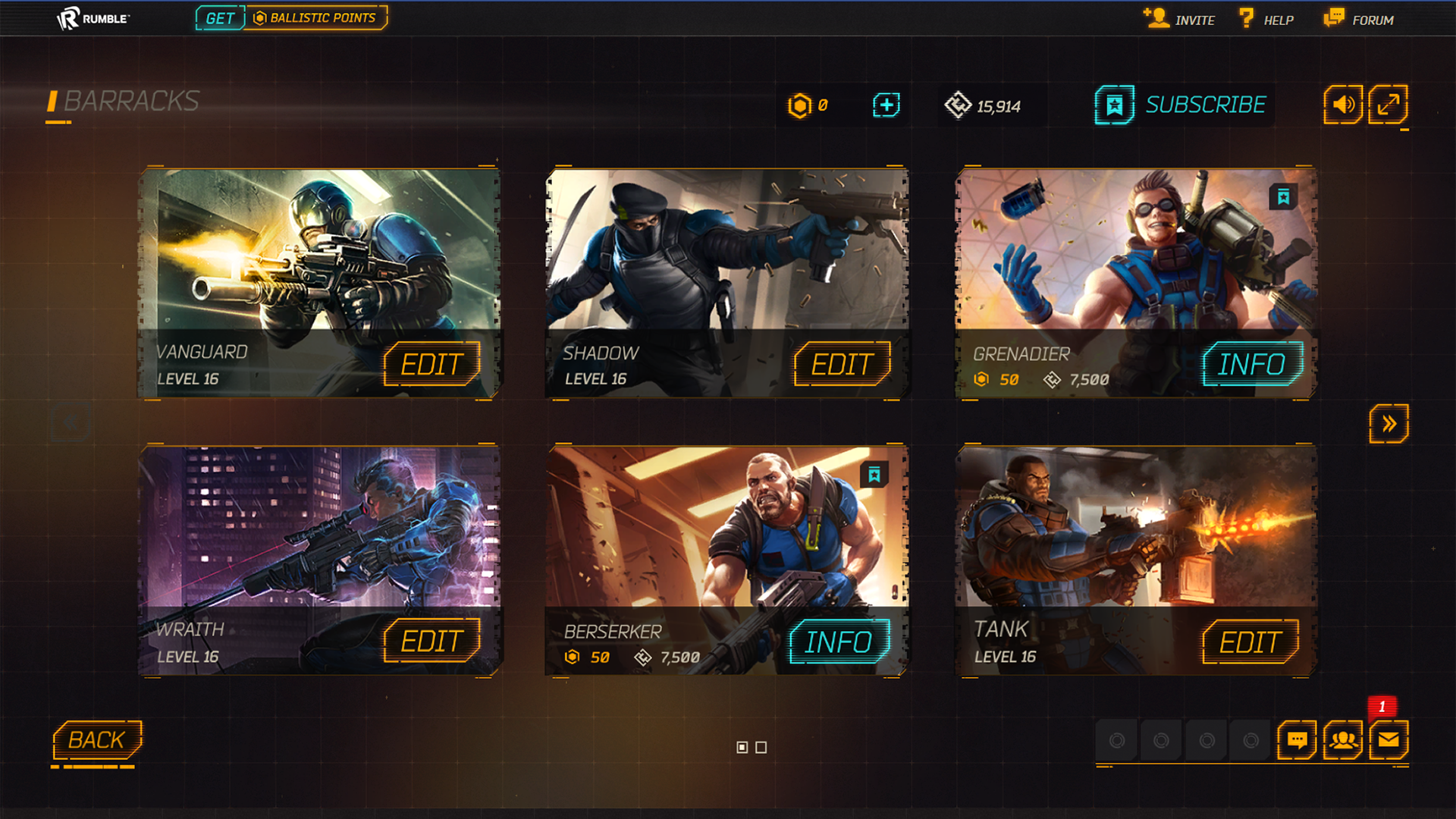
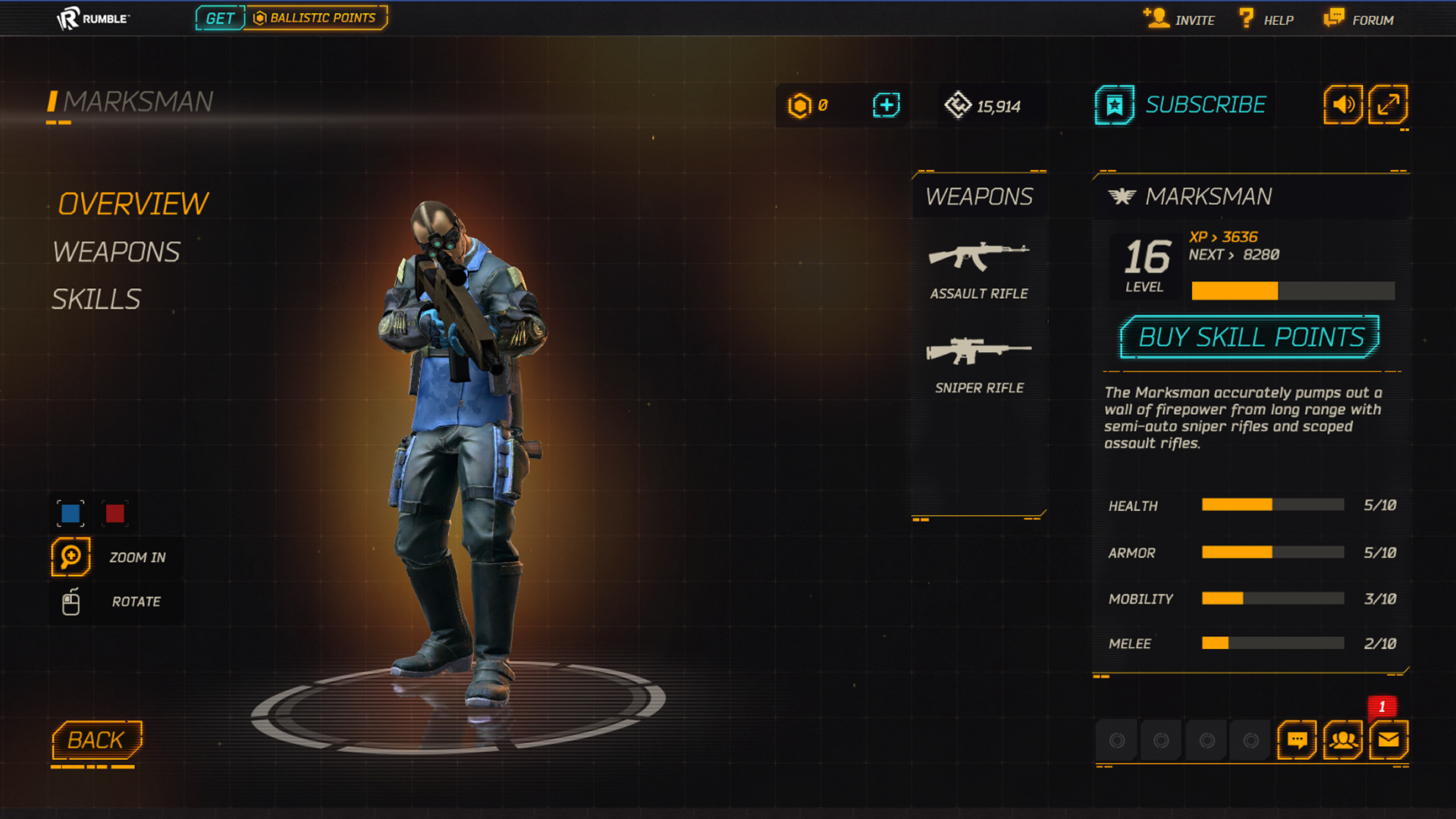
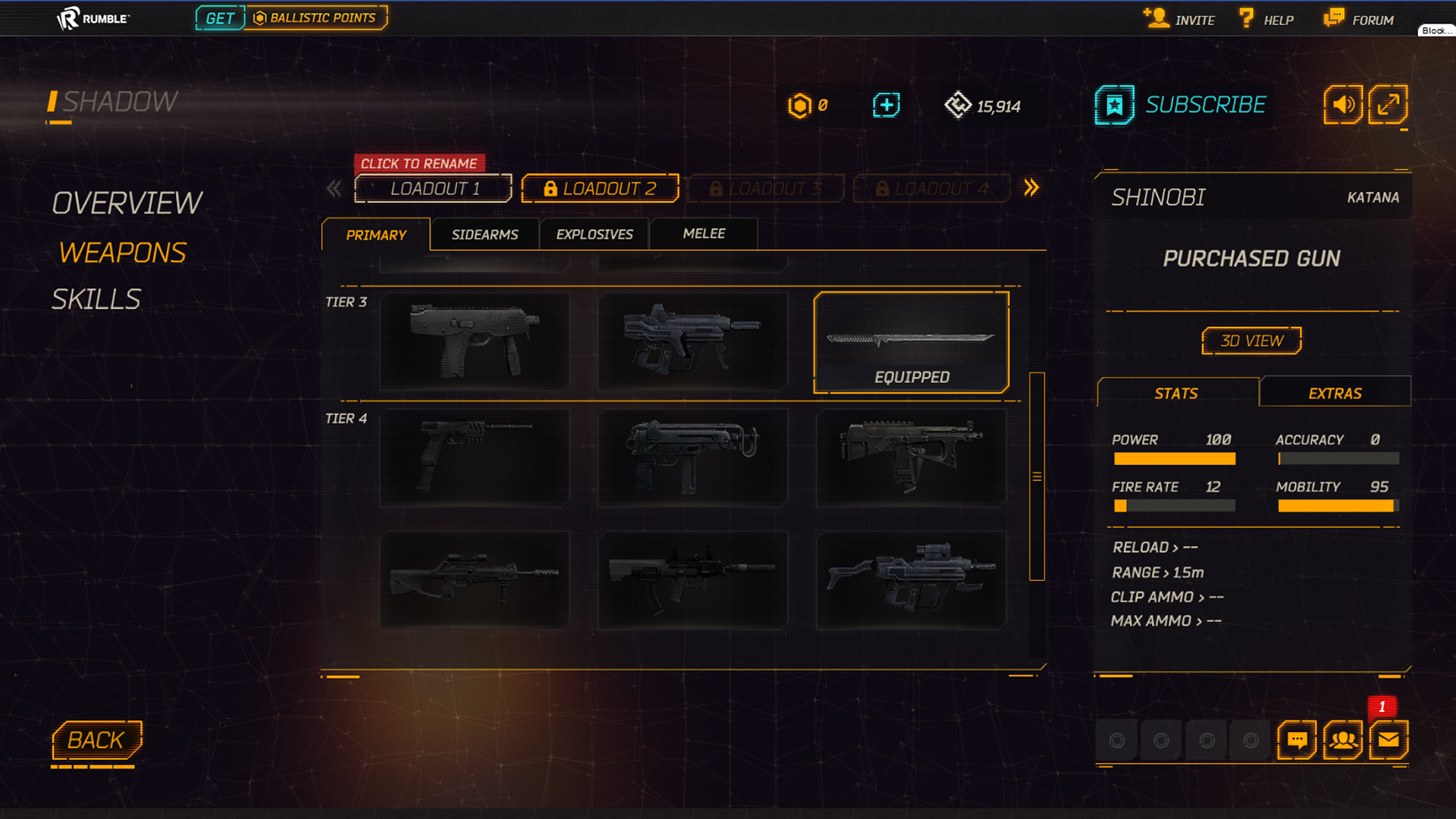
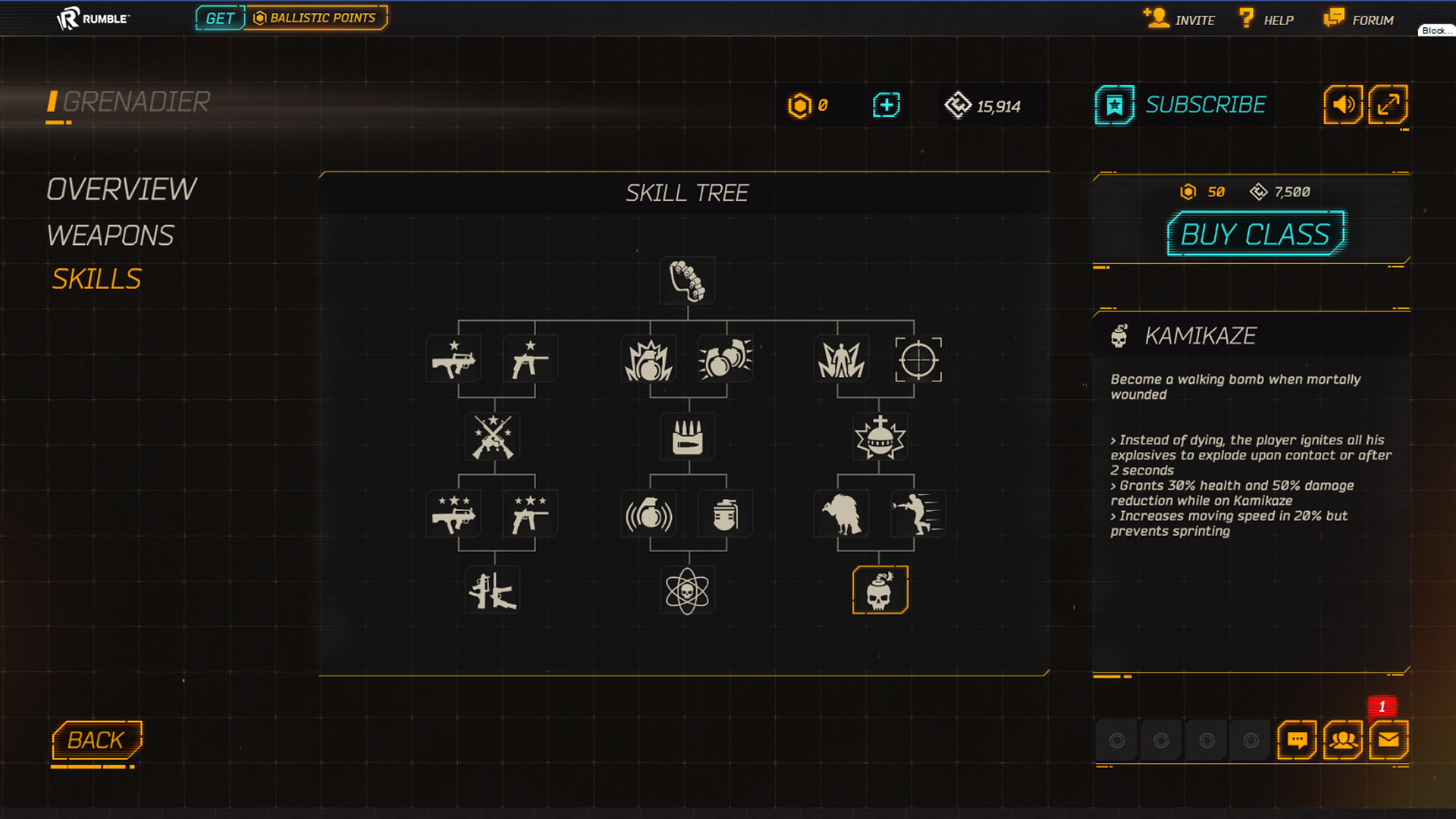
During Version 2.0, skills were also all hard-coded, meaning every change needed by the designers would require a programmer and had to be negotiated to enter as a task on the dev team sprint. That combination of factors was not practical for Version 3.0, which featured several classes with unique gameplay and the skill set was a crucial part of it.
To tackle this pressing matter, the lead designer and I, along with the gameplay programmer, remodeled the skill system using PlayMaker, allowing designers to have control over the creation and fine tune of skills. We had an intense planning of what the modular system should feature, in terms of states, events, modifiers and unique pieces of code, that would allow designers to achieve the most of the new system.
The intense work of creating over a hundred skills using visual scripting with finite state machines on PlayMaker allowed to greatly improve my scripting knowledge. Since both the lead designer and the gameplay programmer were experienced in using PlayMaker, they could assist me in the learning process and in little time I was already familiar with the tool and a structured way of scripting.
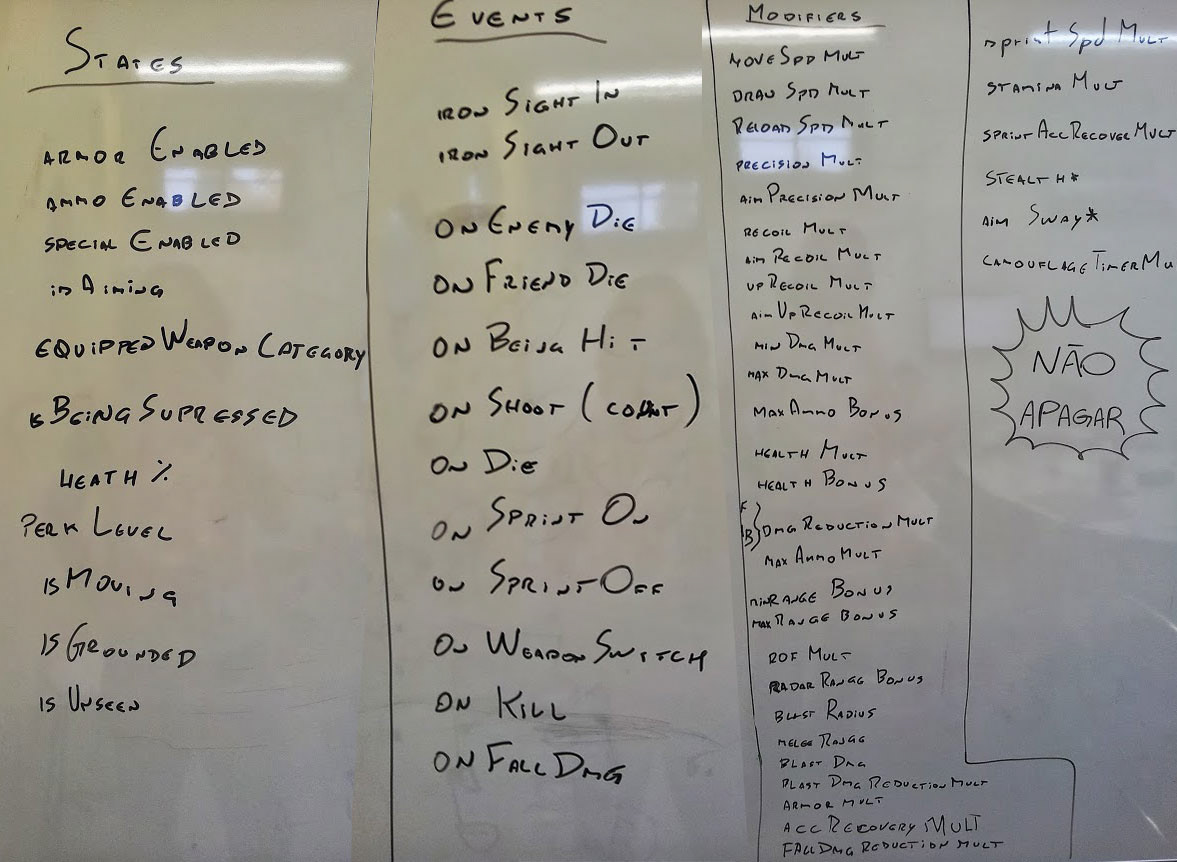
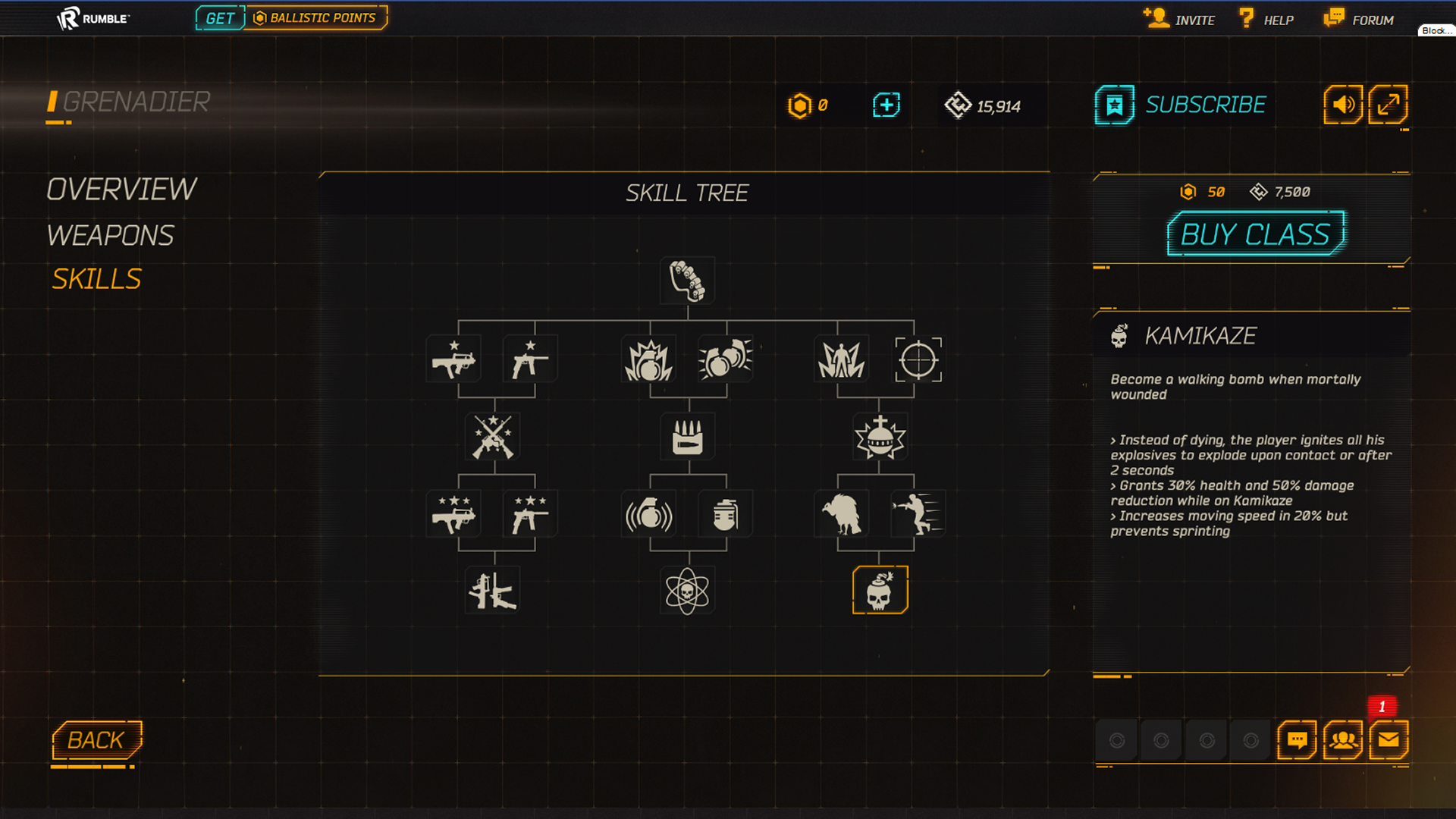
My weekly routine working on Ballistic included balancing weapons, classes' attributes, skills and the game economy. This was a great process of learning about balancing and organized methods of integrating the work from the design sheets to the engine.
As an example, the Excel sheets for weapon balance basically consisted of two main sheets. The first one was the Base Values, containing minimum and maximum values for each attribute. The second one was the Normalized Values, that visually indicated the quality of each attribute from each weapon related to the others and were used to interpolate between the base values from the other sheet.
This approach allowed to make the process of balancing huge amounts of data into a tangible and efficient workflow. The final values were then exported in xml format and loaded into scriptable objects of each weapon, populating each attribute field with the values from the sheets. Before proceeding with integrating an update on a testable build, a weapon would be thoroughly tested on a shooting gallery scene that feature several debugging information to ensure the weapon was behaving as intended.
